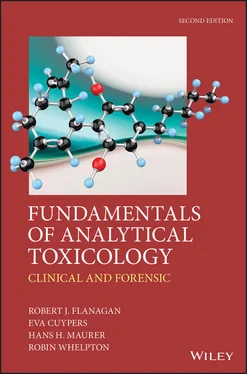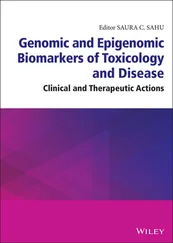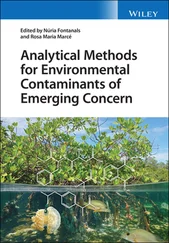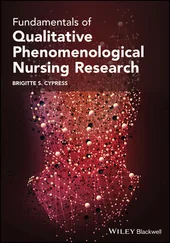Toxicology screening is normally performed using immunoassays and/or temperature programmed capillary GC-MS or gradient elution LC-MS. Proponents of STA sometimes overstate the case for absolute reproducibility of retention data. In practice many factors (clinical and circumstantial evidence, availability of a particular poison, past medical history, occupation, number of peaks present on the chromatogram, selective detector responses, MS fragmentation patterns, and so on) are considered before reporting results. For example, Grapp et al . (2018) positively identified drugs by accurate mass measurement (±5 ppm for [M+H] +; ±10 ppm for [M-H] –), LC retention time (±0.35 min), isotopic pattern match (less than 10 m/z root mean square error [RMS, ppm]), isotope match intensity (less than 20 % RMS) and the presence of at least two fragment ions.
The range of analyses that can be offered by specialized laboratories, sometimes on an emergency basis, usually encompasses several hundred poisons. ‘Poisons screens’ must use reasonable amounts of commonly available samples (20–30 mL urine, 2–5 mL plasma). If any tests are to influence immediate patient management, the (preliminary) results should be available within 2–3 h of receiving the specimens (ideally 1 h in the case of paracetamol). In some cases, the presence of more than one poison may complicate the analysis and examination of further specimens may be required.
A quantitative analysis carried out on whole blood or plasma is usually needed to confirm poisoning unequivocally, but this may not be possible if laboratory facilities are limited, or if the compound is particularly difficult to measure. It is important to discuss the scope and limitations of the tests performed with the clinician concerned and to maintain high standards of laboratory practice, especially when performing tests on an emergency basis. It may be better to offer no result rather than misleading data based on unreliable tests. Clinicians often treat poisoned patients on the basis of suspicion and history rather than await the results of a laboratory test, but may change their approach once they have the result. The treatment of paracetamol poisoning is an example.
Circumstantial evidence of the compound(s) involved in a poisoning episode is often ambiguous and thus, on the rare occasions when an analysis for ‘poisons’ is indicated, it is advisable to perform a ‘poisons screen’ routinely in all but the simplest cases. Similarly, the analysis should not end after the first positive finding because additional, hitherto unsuspected compounds may be present. An exception is sub-lethal carbon monoxide poisoning, which can be difficult to diagnose even if carboxyhaemoglobin measurements are available – circumstantial evidence of poisoning may prove invaluable in such cases. Of course, a positive result on a ‘poisons screen’ does not of itself confirm poisoning because such a result may arise from incidental or occupational exposure to the poison in question, or the use of drugs in treatment.
Blood is often the easiest specimen to obtain from an unconscious patient and is needed for any quantitative measurements. Urine is also a valuable specimen not only because relatively large volumes are often available, but also because it is by far the easiest specimen to obtain, especially from patients likely to have damaged veins. Moreover, some compounds may be detected in urine after they have been cleared from blood. In addition, human urine presents less of a hazard than blood to laboratory staff. However, some compounds such as many benzodiazepines are extensively metabolized prior to excretion and then blood plasma is the specimen of choice for detecting the parent compound. Quantitative measurements in urine are generally of little use in emergency toxicology.
All poisons screens have limitations ( Table 1.7). Thus, of the drugs commonly used to treat depression, lithium has to be looked for specifically, whilst those monoamine oxidase inhibitors (MAOIs) that act irreversibly, such as phenelzine, have a prolonged action in the body even though plasma concentrations are very low after overdosage. Any drug that is not bound to the enzyme may be excreted rapidly and may be difficult to detect except in a urine specimen obtained soon after the event. Tricyclic antidepressants are very lipophilic hence urinary concentrations, even after fatal poisoning, may be below the LLoD of the analytical method if death has occurred relatively soon after the ingestion. Poisoning with endogenous substances such as sodium and potassium is likewise often very difficult to diagnose (Belsey & Flanagan, 2016).
Table 1.7 Some analytes not normally included in analytical toxicology screens
| Anabolic steroids |
Heavy/toxic metal ions (antimony, arsenic, cadmium, lead, mercury) |
| Anticoagulants (apixaban, dabigatran, rivaroxaban, warfarin) |
γ -Hydroxybutyrate (GHB) |
| Baclofen |
Hypoglycaemic agents (gliclazide, insulin, metformin) |
| Carboxyhaemoglobin |
Iron salts |
| Chloral hydrate |
Laxatives (phenolphthalein) |
| Digoxin and other Digitalis glycosides |
Lithium ion |
| 2,4-Dinitrophenol (DNP) |
Organophosphorus and other pesticides |
| Diuretics (furosemide, chlortalidone) |
Thallium ion |
| Ethylene glycol (1,2-ethanediol) |
Volatile compounds (butane, nitrous oxide) |
| Fungal/plant toxins ( α -amanitin) |
|
1.4.2 Forensic toxicology
Toxicological investigations of deaths (including deaths in road traffic accidents) are often undertaken if there is a possibility that drugs or other poisons may have been involved. These include instances where deliberate poisoning, including self-poisoning, is a possibility, especially if death has occurred in children or whilst in police custody, or when decomposition has taken place to such an extent that it is difficult to glean much information as to the cause of death from a conventional post-mortem examination. The value of giving as full a clinical, occupational, or circumstantial history as possible, together with a copy of the post-mortem report, if available, when submitting samples for analysis cannot be overemphasized. Not only might this help target the analysis to likely poisons, but also the interpretation of any analytical results may be greatly simplified.
Non-fatal incidents where toxicological investigations may be useful include collapse whilst in custody, alleged offences under road traffic legislation involving ethanol or other drugs, allegations of poisoning of relatives or pets, doping in sex offences, and other cases of assault. It may also be important to analyze samples from a suspect for the presence of drugs such as ethanol, which may have altered his or her perception or behaviour during the course of a crime.
The specimens available may range from fresh blood to decomposing tissues recovered from a partial skeleton, while the quantity available may range from a kilogram of liver to a dried blood stain. Difficult areas still include screening for a wide range of compounds which could affect driving performance in, say, 2 mL of whole blood while leaving sufficient sample for a quantitative measurement, and detecting drugs used in sexual or other assaults (drug facilitated crime, DFC). Detailed guidelines as to sample collection and the scope of the analyses required in this latter case are available (UNODC, 2011).
An important role of the Coroner in England and Wales, of the Procurator Fiscal in Scotland, and of the Medical Examiner or equivalent in other jurisdictions is to establish how the deceased came by their death. The data derived from such investigations may be invaluable in monitoring the incidence of fatal poisoning. The importance of adequately documenting all acute poisoning incidents both in the hospital notes and in the laboratory records becomes clear when it is remembered that even an apparently trivial case may eventually be reviewed in detail in a coroner's or other court. Required documentation includes correctly recorded patient and sample details, the date and time of collection of samples, details of physical examination, nature and timing of treatment, particularly drug treatment, results of investigations (including units), and conversations with poisons information services and the laboratory. The laboratory should fully document all analyses and keep copies of all the reports issued. Residues of samples should be kept, appropriately stored, e.g. at –20 °C, until the conclusion of the investigation.
Читать дальше












